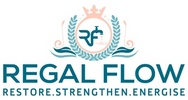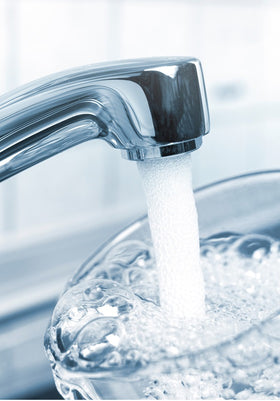
What Is the Downside of a Water Softener?
Thinking about installing a water softener? From cleaner kettles to longer-lasting boilers, the Benefits & Effects of Soft Water are real. But before diving in, it’s worth considering the full picture—including potential downsides like maintenance and environmental impact. Here’s what every homeowner should know before softening up.
Understanding the Potential Drawbacks of Water Softeners
Water softeners definitely have their place, especially in hard water areas. They can help cut down on limescale, reduce detergent use, and keep your plumbing happier. But like any home upgrade, they’re not one-size-fits-all. Here’s what you might not know.
Cost Considerations
Let’s start with the money—because soft water doesn’t come cheap.
Initial Purchase Price
Getting a water softener installed is a proper investment. The most basic salt-based systems might cost around £500, but if you want a unit that runs efficiently and lasts for years, you’re looking at £1,000 to £3,000. That’s just the start. Installation by a professional can add another £200–£500, depending on your plumbing setup. If you’ve got an older home, or awkward pipework, costs can creep up even more.
Ongoing Costs (Salt, Electricity if Applicable)
Unlike a filter jug that you can forget about for weeks, a water softener needs regular attention. Salt is the biggest recurring cost—about £50 to £100 a year. And if your system uses electricity, you’ll notice a slight bump in your energy bills, particularly during regeneration cycles.
Maintenance and Potential Repairs
Think of a softener like a car—it needs servicing. Most systems should be checked yearly to keep them running efficiently. That might set you back £50 to £150. If anything goes wrong, such as a valve or resin tank issue, repairs can be more costly than you’d think. Not planning for this can catch homeowners off guard.
Environmental Impact
Soft water might be kind to your appliances—but it’s not always kind to the planet.
Wastewater Discharge (Brine)
Salt-based softeners work by flushing out calcium and magnesium and replacing them with sodium. That process creates brine—salty wastewater that flows down the drain during regeneration. In small households, the effect might seem minimal. But across towns and cities, this salty waste adds up. It can find its way into local waterways, harming aquatic ecosystems and making water treatment more complicated for your local council.
Salt Consumption
We’re not just talking about what ends up in your water—it's the salt bags you have to keep buying. That salt has to come from somewhere, and producing and transporting it creates a carbon footprint. Some regions have even banned traditional softeners due to their environmental impact.
Changes to Water Chemistry and Taste
Soft water feels different—and for some, it tastes different too.
Sodium Content in Softened Water
Softened water contains more sodium than untreated tap water. For most people, it’s not enough to worry about. But if you’re on a low-sodium diet or have kidney issues, it could be a concern. It’s worth noting that softened water shouldn’t be used for infant formula either. Many households choose to keep one tap unsoftened for drinking and cooking, just to be safe.
Altered Taste Perception
Some people describe softened water as feeling a bit “slippery” on the skin. Others say it tastes flat, especially when compared to spring water with natural minerals. It’s not necessarily bad—just different. But if you’re picky about your cuppa, you might notice the change.
The "Slippery" Feel of Soft Water
Ever showered at a friend’s house and felt like you couldn’t rinse the soap off? That’s probably softened water. Soft water doesn’t strip away your skin’s natural oils like hard water does. That’s good for dryness, but it does take some getting used to. Some people love it—others find it annoying.
Potential for Corrosion in Certain Older Plumbing Systems
If you live in a newer build, you’re unlikely to run into this. But in older homes with galvanised or lead pipes, soft water can accelerate internal corrosion. That’s because it’s more aggressive in picking up metal ions. It’s rare, but if your house is more than 50 years old, it’s worth getting a plumber’s opinion before installing a softener.
Weighing the Pros and Cons
Water softeners are great at doing what they’re designed for—reducing limescale, extending appliance life, and improving cleaning efficiency. But the downsides are real and worth thinking about. There’s no perfect solution. Some households might find the benefits easily outweigh the drawbacks. Others—especially those focused on sustainability or health—may prefer alternatives like salt-free systems or pairing a softener with a reverse osmosis unit for drinking water.
Conclusion: Should You Soften Your Water?
Water softeners solve one problem but can introduce a few others. They require a financial commitment, ongoing upkeep, and come with environmental and health considerations. The best decision is an informed one. Weigh up what matters most in your home—budget, health, taste, or the planet. Once you’ve done that, you’ll know whether a water softener is a smart move—or if it’s time to explore other water treatment options.
More Water Softener info our customers have found helpful
Top Benefits of Installing a Water Softener in Your Home
Is Soft Water Better for Your Skin?
Can You have a Boiling Water Tap with a Water Softener?
Will a Water Softener Remove Build-up in Pipes?
How Long Does it Take a Water Softener to Clear Pipes?
Can I Run Hot Water Through a Water Softener?
Does a Water Softener Affect Cold Water?



Leave a comment